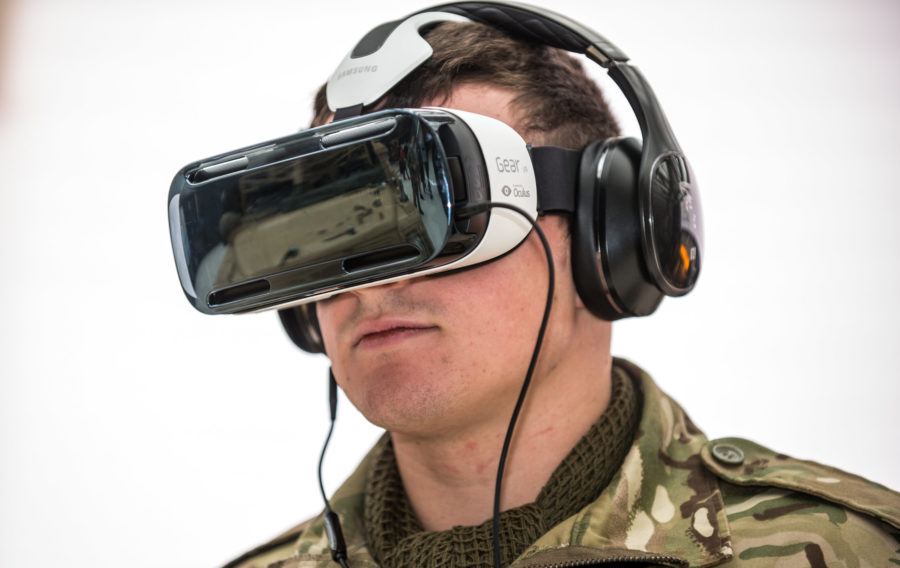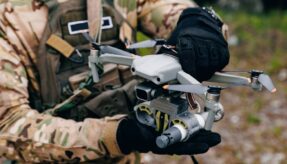
Ken Peterman, President, Government Systems at Viasat examines how the transference of commercial off the shelf (COTS) technology can boost innovation, collaboration and save money in the defence industry.
Military resilience depends upon information networks
Secure, assured and ubiquitous communication is integral to every military operation across today’s battlespace. It’s critical that the right information is delivered accurately, securely and in a way that cannot be disrupted or exploited by enemy forces.
The range of threats now faced by the UK means that we must recreate the innovation and ingenuity seen in wartime to succeed against cyber and electronic attack, space and counter-space weapons and low-yield nuclear weapons. Specialists, particularly those in the information sphere, will be in high demand.
Cuts call for collaboration
Amid cuts to the military and government, the UK is facing defence budget shortfalls over the next decade of up to £20 billion. However, these may be mitigated by the Modernising Defence initiative, which has set a series of new, positive emphases: speed of acquisition; a willingness to consider approaches which put modest capability into the hands of users; and an emphasis on new and innovative contracting methods.
We are already seeing the benefits of this type of approach in the US (notably the Airborne and SOF communities) and in some parts of the UK Defence establishment. In these areas, thoughtful and innovative soldiers work closely with commercial engineers to embrace exciting new technologies and then, by their own operational knowledge and innovative skill, extend the use of these systems beyond the visions of their inventors.
Partnerships will drive innovation
The UK has an opportunity to increase this collaboration with private sector leaders to equip our forces with some of the most advanced communications and battle management capabilities ever developed, all at a significantly lower cost and with no loss of integrity or security.
This approach harnesses the accelerated technological advances of the commercial sector in recent years, with perhaps the best example of this being the smartphone. Whilst growing progressively more sophisticated, the smartphone has continued to introduce easy to use, cloud-based capabilities at a low cost. Some of these cloud-based applications, such as interactive maps, live HD video streaming and location sharing services, provide civilian users with more situational awareness than today’s UK warfighter receives from standard military commissioned equipment.
There is an opportunity to bring these same cloud-enabled civilian technologies to life for military forces, and key people in the UK Defence community now see this and are determined to change the acquisition model to achieve it. The old perception that ‘bespoke is better’ is now increasingly being seen as leading Defence systems down a blind and expensive alley, but in its place the benefits of COTS (Commercial Off the Shelf) technology are stepping into the foreground.
Another benefit is that the use of commercial systems sold and upgraded across the Western world helps to make Western coalition interoperability a default condition.
Emerging cloud-based capabilities
The traditional procurement process of tweaking every bespoke piece of equipment can take up to 7-10 years. Comparatively, harnessing the rapid pace of private sector innovation can reduce costs, improve resilience, enable greater security tailored to the needs of the operation and speed up the upgrade cycle to near commercial rates.
For example, today’s commercial high-speed, secure global satellite communications (SATCOM) networks, like Viasat’s Hybrid Adaptive Network concept, present the UK military and its allies with an opportunity to access new and emerging cloud-based capabilities that will improve tactical communications and redefine the nature of modern warfare.
As shown by Viasat at this year’s Association of the United States Army conference, these cloud-based connectivity solutions are available today; and with near-peer adversaries also pursuing similar emerging technologies, it will be critical for the MOD and its allies to move quickly to deliver cloud-based solutions in order to maintain the tactical edge needed to deter these future threats.
Pulling technology, operations and contracts together
These advantages are ours to embrace and it is heartening to see the UK Government and MOD encouraging these dynamic individuals, previously seen as maverick, to be heard and collaborated with. This gives them the top-cover to encourage the use of systems that embrace the latest battle-winning technology, ensure that it is tailored to specific operational needs and to use innovative contracting methods that enable them to upgrade it easily and frequently.
With progress at this rate, it will not be long before a brigade in contact with the enemy will have as much network connectivity as a teenager’s bedroom.
collaboration COTS Innovation Ken Peterman technology Viasat







